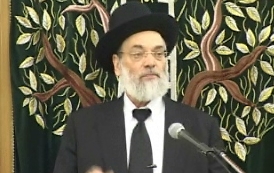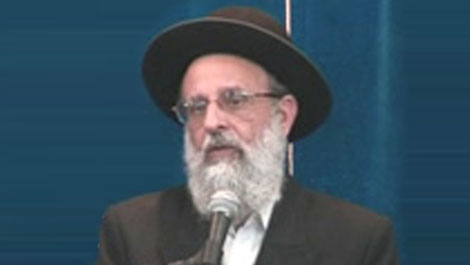- Sections
- Parashat Hashavua
447
There are, though, many post-Talmudic special minhagim (reading Ruth, eating dairy, displaying greenery,…), some of which also raise interesting and unique halachic situations. Regarding most of these minhagim, the rationale is shrouded in secrecy, allowing several speculations. Perhaps this is part of the nature of the holiday – hidden matters. After all, its date is not written, allowing it to be the basis of a major dispute with the Tzedukim. In theory, i.e., when the month is set based on moon sightings, it can fall on different dates. Even Hashem’s revelation at Sinai to give the Torah is not dated or connected in Tanach to Shavuot.
Another Shavuot topic that is shrouded in mystery is related to the Torah reading. This is the piyut (liturgical poem) known, by its opening word, as Akdamot (meaning, an introduction). It is ostensibly written by someone named Meir, the son of Yitzchak, Shaliach Tzibbur (usually referring to a chazan, but literally means the agent of the community). He seems to have been a contemporary of Rashi and lived in Worms. (Some legends link the author to a miraculous event that occurred hundreds of years earlier.) While poetry of Ashkenaz in that era was often hard to understand, this is much harder, as it is written in a somewhat unfamiliar dialect of Aramaic (many who read gemara and Unkelus fluently have a lot of trouble understanding it).
Akdamot’s basic content is as follows. The first part is praise of Hashem, who created the world, and of the angels, who serve Him. Then, it retells the argument between Bnei Yisrael and the nations, explaining why it is appropriate for us to be given the Torah and worthwhile for us to keep our commitments. The last of 45 double stanzas is perhaps most memorable: "Exalted is our Lord in the beginning and the end; He desired and wanted us and gave us the Torah." (Learn more in Rav Maimon’s "Chagim U’Moadim.)
Akdamot has survived well after the majority of piyutim (yotzrot, ofanim, …) have primarily disappeared from our lives and are relegated to the back of a few complete siddurim. While Akdamot has survived, it has been scaled back. The original minhag was to recite it after reading the first pasuk; now, to avoid serious questions of hefsek, most recite it before the kohen’s opening beracha. Apparently, Akdamot’s was destined to survive and remain part of the lore of the day. We have a deep and mysterious relationship with Hashem that we do not fully understand. It is part and parcel of the reason we were given and continue to dedicate ourselves to His Torah. Even though so many stay up all night and so few have strength/enthusiasm for the morning tefilla and Torah reading, we will hopefully continue to read Akdamut (with its simple but special tune). In so doing, we will reinforce the idea that our clinging to the Creator from that momentous day at Sinai is worth singing about with recognition that we cherish everything, even if we only understand some of it.

Parashat Hashavua: Counting and Soldiers – Then and Now
Rabbi Yossef Carmel | Adar 5785

Parashat Hashavua: “With a Strong Hand He Will Expel Them from His Land
Harav Shaul Yisraeli – from Siach Shaul, p. 205-6
Rabbi Yossef Carmel | Tevet 5785

Parashat Hashavua: The Visits in Beit El of Yaakov/Yisrael – part I
Rabbi Yossef Carmel | kislev 5785

Why Do Children Start With Vayikra?
Rabbi Shaul Yisraeli zt"l | 5771

Prayer for Redemption and Blessings for Mashiach
Rabbi Avraham (Abe) Abrahami

The Halachot of Pidyon Haben
Rabbi Yirmiyohu Kaganoff | 5769

Crock pot use on Shabbat
Rabbi Daniel Mann | 5772

Crock pot use on Shabbat
Rabbi Daniel Mann | 5772

The Significance of Completing the Mishkan
Rabbi Avraham Yitzchak HaLevi Kilav | 28 Adar 5785





